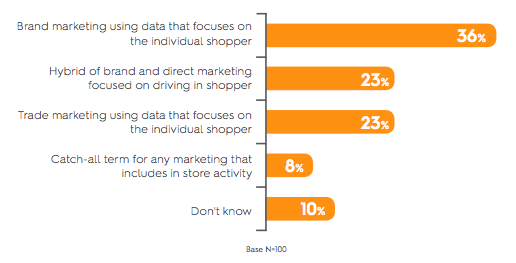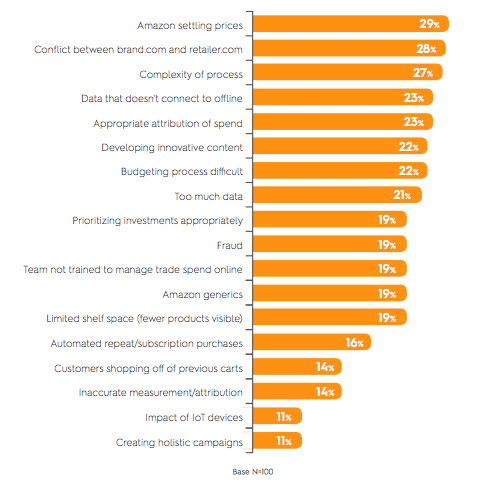As retail sales shift from offline to ecommerce, research shows marketers are adjusting trade strategies and budgets. Performance marketing tech company Criteo, in partnership with Kantar Millward Brown, recently released Trade Marketing in Transition, a study commissioned to better understand how marketers are working with retailers to draw attention to their products.
With the growth of ecommerce and more deliberate focus on the shopper across devices and channels, there is increasing demand to coalesce brand budgets with trade budgets. This combination typically includes retail display allowances for product positioning, temporary price reductions, end caps, and shopper marketing.
The survey group was asked which of the following is closest to their understanding of what shopper marketing is?

“Trade marketing is undergoing a profound shift,” said Jonathan Opdyke, president of brand solutions at Criteo, in a news release. “To profitably target and acquire shoppers, both online and offline, marketers must adapt their trade practices and budgets. This study confirms that retail marketers need solutions that allow for real-time measurement of ROI and an end to the debate between offline vs. online, in favor of an omnichannel approach.”
“Especially in the CPG and Grocery sectors, we’re seeing a clear indication from marketers that the time is right for brand and trade marketing to align,” Adrian McCallum, senior director at Kantar Millward Brown, in the release. “This move, combined with more widespread integration of digital technology, helps connect marketing efforts more closely to the sale and creates greater shopping efficiencies.”
Key findings from data analysis of trade marketer’s survey responses include:
Trade marketing pain points
Respondents felt measurement/attribution (59 percent) and trackability (58 percent) were trade advertising challenges that needed improvement. Reaching younger consumers (56 percent) and process complexity (55 percent) were also highly ranked.
Ecommerce imperative
Fifty percent of respondents rated online sales as “disruptive to hugely disruptive” to their industry.
Paid search growth
Over the next five years, both on stand-alone ecommerce and retail sites, paid search was considered an area with the greatest expected increase in effectiveness (62 percent). Print-related tactics were expected to have the greatest decrease in effectiveness (52 percent).
Trade marketing vs. ecommerce challenges
Amazon setting prices (29 percent), conflicts between brand and retail sites (28 percent), and the complexity of process (27 percent) were ranked as the top three concerns when it comes to marketing products online versus in a store.

Trade spend wish list
Simpler methods to measure effectiveness (58 percent), a holistic view of the shopper (56 percent), and connecting trade and brand budgets (53 percent) were the top three items on marketers’ “wish lists” for the future of trade spend.
Additional takeaways include:
- Retailers should utilize product listing ads and display advertising techniques to increase sales and generate incremental revenue to compete with Amazon.
- Given that paid search on ecommerce and retail sites is considered an important part of the future of trade spend, brands should continue to develop the ability to manage this form of trade marketing.
- Just as they do offline, brands and retailers need to come together to develop best practices for the mutual benefit of driving sales and developing efficient practices and measurement tactics to assess the impact of online trade activities.
- Late-comers to ecommerce marketing may face a daunting challenge when they choose to support online sales, due to factors like Top Rank Persistence and Amazon’s growing dominance in the market.
Download the complete report here.
To assess trade marketing activities and budgeting, Criteo worked with Kantar Millward Brown to develop a survey instrument that would be administered to marketers who had budgetary authority over trade spend in some way during the past 10 years. 100 executives were either interviewed by phone or asked to take an online survey. Half of the respondents were from the CPG sector, with the rest roughly divided between CE, Apparel, Toys and Health & Beauty. The study was conducted during April 2017.







